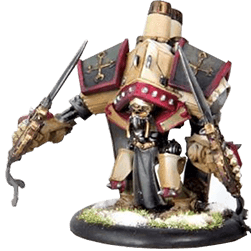Nov. 02, 2019
Poker is also called playing cards. Poker as one of the Cards Games. Its origins come from a variety of claims, the most recognized of which is that cards first appeared in China, at least in 969 AD. At that time, a pair of cards in China had four suits, each with 14 cards, used as both banknotes and cards.
Some authorities believe that India is more likely than China to be the origin of cards. It has been suggested that there is a certain connection between the early European cards (Tarot) and the goddess Ardhanari in Hindu mythology. The image of the goddess has four hands, each holding a wand, a cup, a sword and a ring (representing money). In some early European cards, similar patterns were printed. There is a saying that the cards are made in Europe by the Gypsies who might have been an Indian nation. They crossed Persia, Arabia and entered Egypt, and Egypt arrived in Europe. Some of them, about 100 people, entered Paris in 1427.
Plastic Dice
The time when cards were passed to Britain was later than that of other European countries. According to the Cards Game Manufacturer's information, José died in 1400. Although he had been counting various entertainment activities at the time, he never mentioned cards: "They dance, they play chess and banquets." About Edward I used to wear a game with four kings (k) games with a cuffed side, almost certainly referring to some other game, maybe some form of chess. The earliest mention of the time for British playing cards was in 1465, when British poker makers applied to Edward IV for bans on the importation of foreign-made Zach cards, and there was an appropriate decree to support.
CP Hagravi wrote in his book "The History of Playing Cards": "There is a legend about Columbus and his sailors, saying that these sailors love gambling when they encounter in the hustle and mysterious sea. When the storm hit, they threw all their playing cards into the sea because of the horror caused by superstition. Later, after they arrived on land, they regretted this reckless action, so they were in this new The country used a leaf to make some playing cards, which attracted a lot of interest from the Indians." The material that Serraso de Navea said ("Florida History"), said In the 1534 expedition, the Spanish soldiers used leather playing cards to play cards. This statement does not seem to be just a legend. Mexicans had a card game very early, when Mexicans called amapa-tolli, where amapa means paper, and tolli means game.
The modern form of fifty-two cards, divided into two red suits and two black suits, is probably derived from the early Italian Tarot (TAROT): Tarot There are four suits, each with 10 or fewer small cards (SPOT CARDS) and 4 head cards: King (K), Hou (Q) and Cavaliers and Guards. After the early days of playing cards, some of the modern playing cards were still replaced by the Warriors. The guards were printed in the shape of various male servants (VALET), but the name of the guard was still retained, but it has been renamed J (JACK) in modern usage. In the 52-card deck of cards, the Cavaliers are no longer used, and they are used as head cards.
Chinese solitaires are quite different from Western solitaires; Chinese solitaires are narrow and long, usually 2 to 2.5 inches long and 0.5 to 2 inches wide, and early cards are even narrower and longer. In terms of number of cards and suits, Chinese and Indian solitaires are very different from Western poker cards. There is an Indian card, a pair of 144 cards, divided into 8 suits, each suit 18 cards; another Indian fine card for each pair of 120 cards, divided into 10 suits, each suit 12 cards. There is a Chinese card, a pair of only 30 cards, divided into 3 suits, 9 suits per suit, and 3 cards with great power; but generally there are 4 suits. In addition to card game playing cards, there are also Plastic Dice in China, which is fun and interesting. If you are interested in it, you can give it a try.
Previous: The Origin Of Poker
Next: 4 Poker Games For Kids
